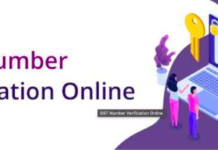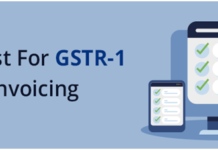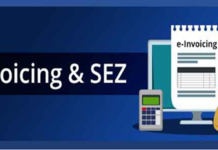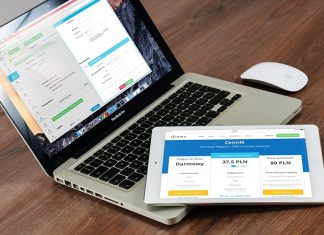Being a part of the startup ecosystem, I had the opportunity to meet a lot of startup enthusiasts and entrepreneurs, and hear out their experiences and stories. Some were happy, some stressed, and some nervous. It was a great learning experience for me as it helped me to figure out why people succeed, why they struggle or fail in their entrepreneurial journeys.
 In one such closed group meeting, I came across a technologist who had started his own tech firm two years ago after spending more than 20 years with one of the industry’s biggest players. He mentioned that while working on a particular project in his previous organization, he figured out a gap in the offering that no one cared about. He then reached out to his clients and asked them if they will be happy to get this gap filled in. On receiving a positive response, he decided to call it quits one day and with a couple of other like-minded people (technologists again), started his own firm.
In one such closed group meeting, I came across a technologist who had started his own tech firm two years ago after spending more than 20 years with one of the industry’s biggest players. He mentioned that while working on a particular project in his previous organization, he figured out a gap in the offering that no one cared about. He then reached out to his clients and asked them if they will be happy to get this gap filled in. On receiving a positive response, he decided to call it quits one day and with a couple of other like-minded people (technologists again), started his own firm.
It took the team close to six months to come up with the product. And when he approached the same set of clients, they were happy to see the gap filled in, just that there was one issue – no one was ready to pay for it. On further interaction, clients shared that while they were happy with the solution offered, they didn’t feel the need to spend extra money on the same. They were happy to consider it if it was offered free of cost to them (as an add-on to the existing product).
At that time, the gentleman realised he missed out on one of the most important aspects of doing business – the product saleability. And that prompted me to think, “What should come first, the product, or a thorough Market Research?”
As an entrepreneur, we constantly think of challenges that we face — in our daily lives, or in our working environment, and try to figure out a solution that can be offered to the consumer. We choose a solution, depending on how we feel the big the gap is. For instance, some people feel there is a lot can be done in social media, and hence focus on that, and some feel they can help consumers in selecting certain products better, and hence their focus lies there.
As far as my interaction with different entrepreneurs is concerned, the idea usually stems out from the mind of an individual (typically the founder), and s/he leads it to next steps. I figured out in most of the cases, it was an individual’s thinking of a gap that resulted in a product.
So what’s wrong with that? Nothing, just that most of the times, these individuals refuse to validate their thinking with reality. They are so sure and confident of their idea that they don’t feel the need to cross check if it will be accepted well in the market. Personal egos and rigidity sometimes take over practical thinking and that’s where the most important step before launching a product is missed out – doing a thorough market research before turning one’s dream product into reality. This is what had happened with the gentleman whom I met in that forum.
And that’s where I strongly feel, the first step to kick start any idea is to get it validated and be assured that one is moving in the right direction. Here are a few steps that a budding entrepreneur must take in order to ensure he/she is moving in the right direction:
1Acceptance of the solution/product in a closed group
You have identified what you are going to work on, and are confident that it’s the need of the hour. But before beginning to work on it, you must validate if the market also feels so, and if there is a genuine demand for it. Start checking with your friends, explain them why you are thinking on these lines and how will it benefit the end users. Talk to people who have faith in you, and who will give you a genuine feedback. Please ask them to answer candidly, and ensure they just don’t respond to please you. An initial check will help you in determining if you are on the right path or not.
2Acceptance of the solution/product in the market
Once you have gained confidence of the product’s acceptance in your closed group, please don’t stop. Now is the time to do a reality check. Move out of your comfort zone now and do a thorough market research. You may use an MR agency or if the budget doesn’t permit, use your relationships to talk to reach out to maximum potential end users. This will be the acid test as their acceptance will determine whether it makes sense to explore the idea further or not.
3Mere acceptance is not crucial, saleability is
Many times, I have heard people saying – wish this product had this feature, wish I had something that could do this, and I’m sure you would have heard that too. Generally, I ask them immediately – will you pay for this, and in 90 per cent of the cases the response is a straight “No”.
And that’s the difference between accepting a product and paying for it. A lot of people may revert saying that they love the product, but then you immediately need to ask if they are willing to pay for it or not.
We all love freebies, don’t we? But when it comes to paying for a product, we start calculating as end users. This might be the most tensed and nervous exercise for you, but don’t worry, if you pass this critical test, your half battle is won and the solution has a green signal from the consumers.
Please note that in some cases, the users may not pay for the product but you may earn revenue out of it through other mediums (e.g. sponsorships, etc). In such a case, you may touch base with the relevant audience that would be bringing the revenues and have their buy-in on the concept.
4Backward calculation
The product is validated, the users have accepted it, and are willing to pay for it, too. Now is the time to prepare your business case. Plug in the costs that you may incur, and the revenue that you will generate. It will help you to ascertain whether your product is business-ready or not (in terms of profitability). It may not be perfect, but if the figures don’t match, you may need to re-think your strategy.
5A mentor on board always helps
As an entrepreneur, you are always excited, and raring to do more than you can execute. It’s natural, and that’s when you need to have someone who can guide you, helps you in refining your thoughts, and ensure things are executed in the right manner. A mentor can be a huge asset and can keep a track of the overall picture while you delve yourself into operational nitty-gritty. Mentors can give you insights with their own experience and also help in connecting with investors, partners, valuable resources and a lot of other people who might be able to add value to your business.
So before you start working on your product, tick mark all the above points to ensure you have got it right. Trust me, these are very difficult steps but are critical to ensure you don’t face any difficulties once you are into it. While there would be lots of learnings in the journey, that may result in certain change in strategies too, the rock solid base created by you will keep you afloat in the long run.












































